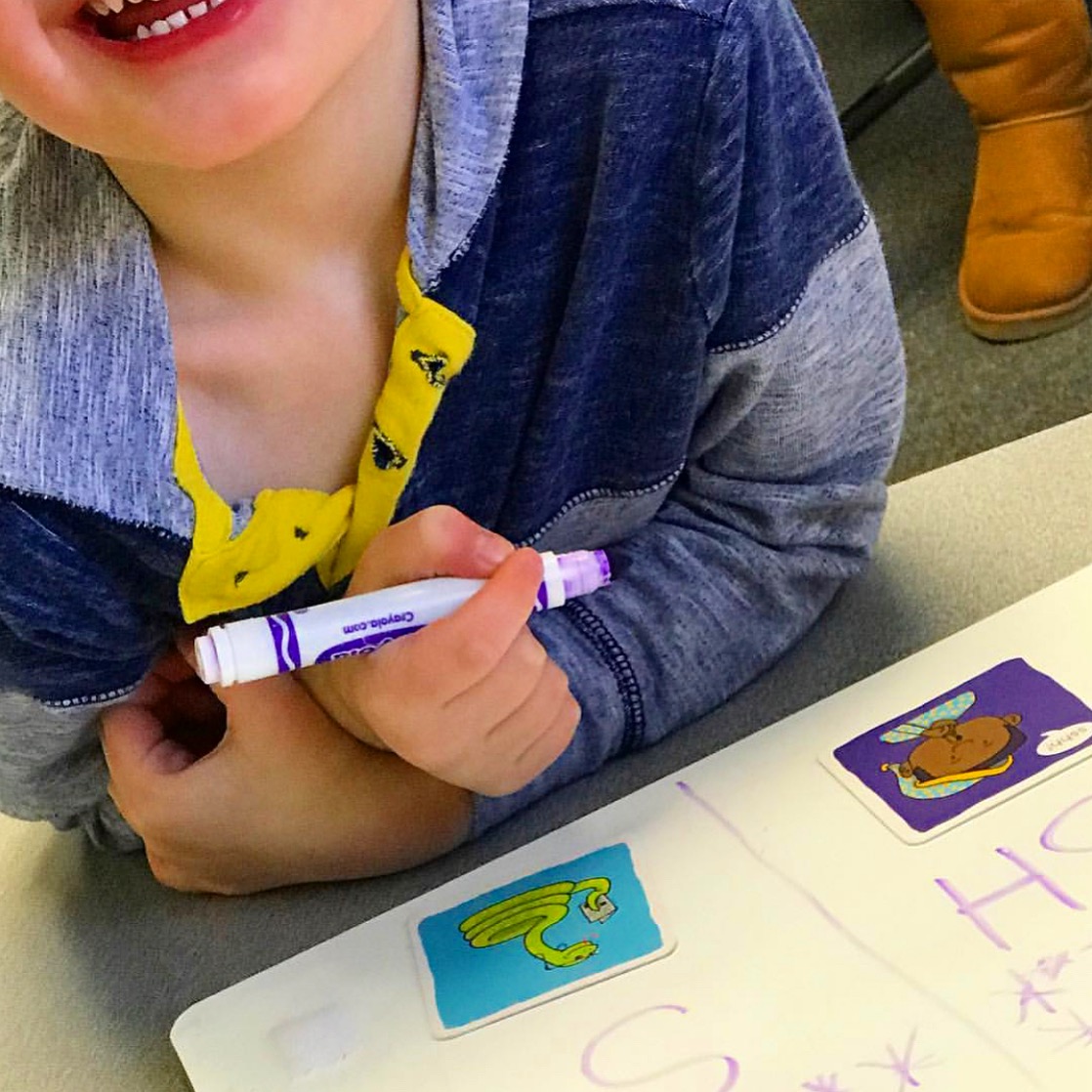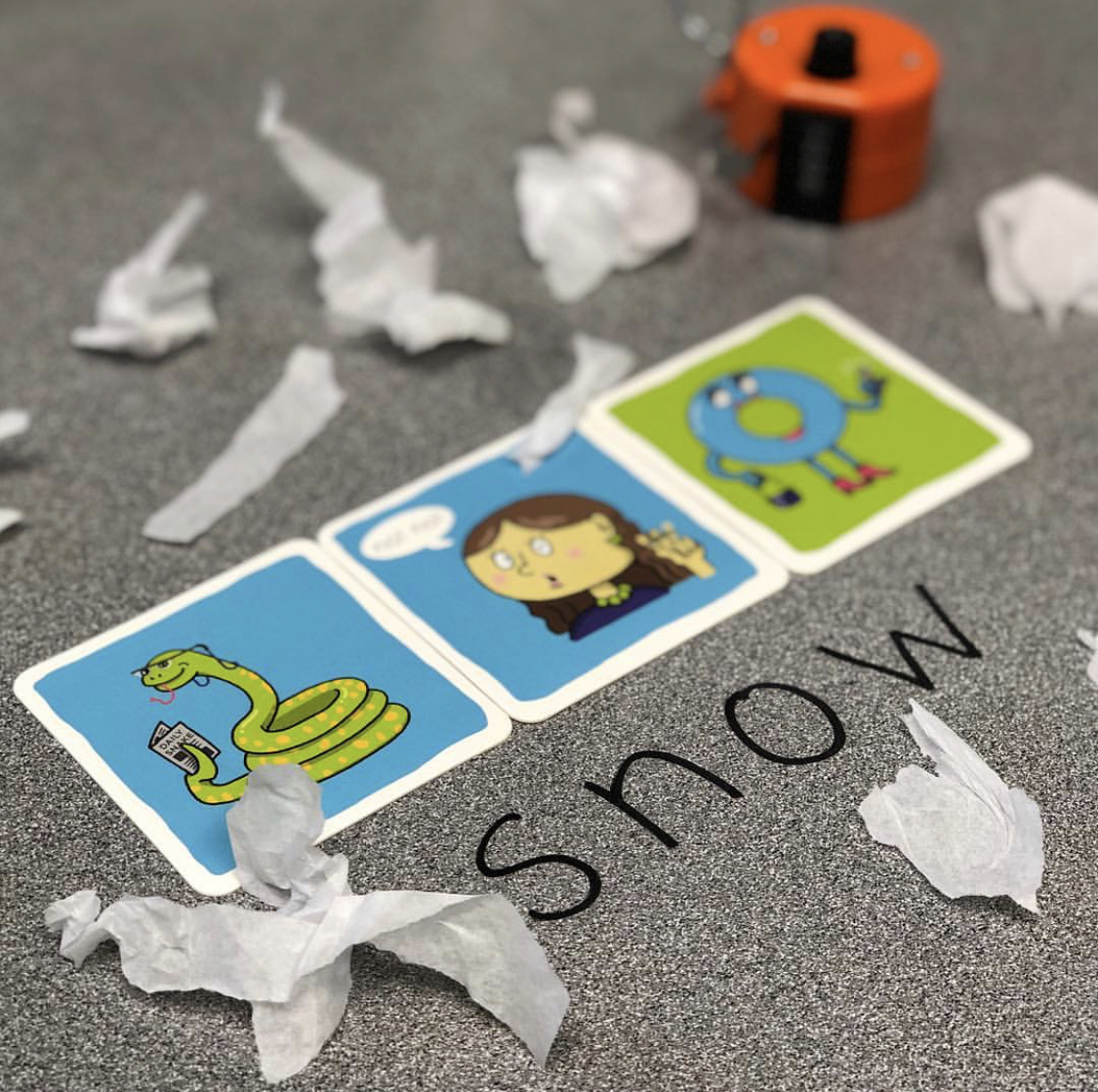Last week in our newsletter, we said “before a child can do phonemic awareness…a child needs to understand sound-to-letter correspondences.” We realized this week that that sentence is not quite accurate, and we were actually trying to convey a slightly different message. Sound-to-letter correspondences do not need to be mastered before learning phonemic awareness. In fact, most children begin developing phonemic awareness earlier, especially if they are receiving speech therapy.
Hey, SLPs, did you know that you are doing phonemic awareness work each time you address speech sound disorders? That’s right! Because, whenever you are addressing speech sounds, you are manipulating the child’s sound production and perception. Let’s take an example. You’re targeting initial /k/, and the child says “tat” for cat. You may say something like, “Tat?! What’s a tat? We need your coughing camel sound, not your tick tock sound!” Look at that! You just drew the child’s attention to a sound substitution. This is a manipulation of individual sounds and is, therefore, phonemic awareness. Now you want the child to produce the word correctly so you may break the word apart to have the child produce /k/ and then /at/. You may tell the child, “Say /k/. Say /at/.” This step segmented the word cat into it’s onset /k/ and rime /at/. After this, you may blend the word back together into the full word “cat”—another phonemic awareness skill!

Let’s connect this to literacy really quickly. If you need to spell a word, what do you do? You segment the word into its individual sounds /k/-/a/-/t/, just like when you segment words in articulation work, and then assign a letter to each sound. Phoneme blending is very important for reading. When we sound out words, we produce one sound at a time, and then need to blend them back together again.
Here’s the big take home point: whenever you are working on articulation work with preschool-aged children or early readers, keep in mind that you’re also addressing pre-literacy skills! Make sure to write the words or the letters next to your sound cues so the child can start implicitly building sound-to-letter correspondences.

When the child is ready to begin reading and spelling, work on phonemic awareness and sound-to-letter correspondences at the same time. Create a “cheatsheet” with your cards with the sounds and letters together. Then the child can segment the first sound of the word, check the cheatsheet for the matching letter, and write that letter down. Continue with the next two letters for a CVC word.
For reading, find the matching letter on the cheat sheet to figure out what sound it is. Integrating pre-literacy work with speech therapy is surprisingly easy! And the benefits are huge!
Jennie Bjorem M.A., CCC-SLP

One comment